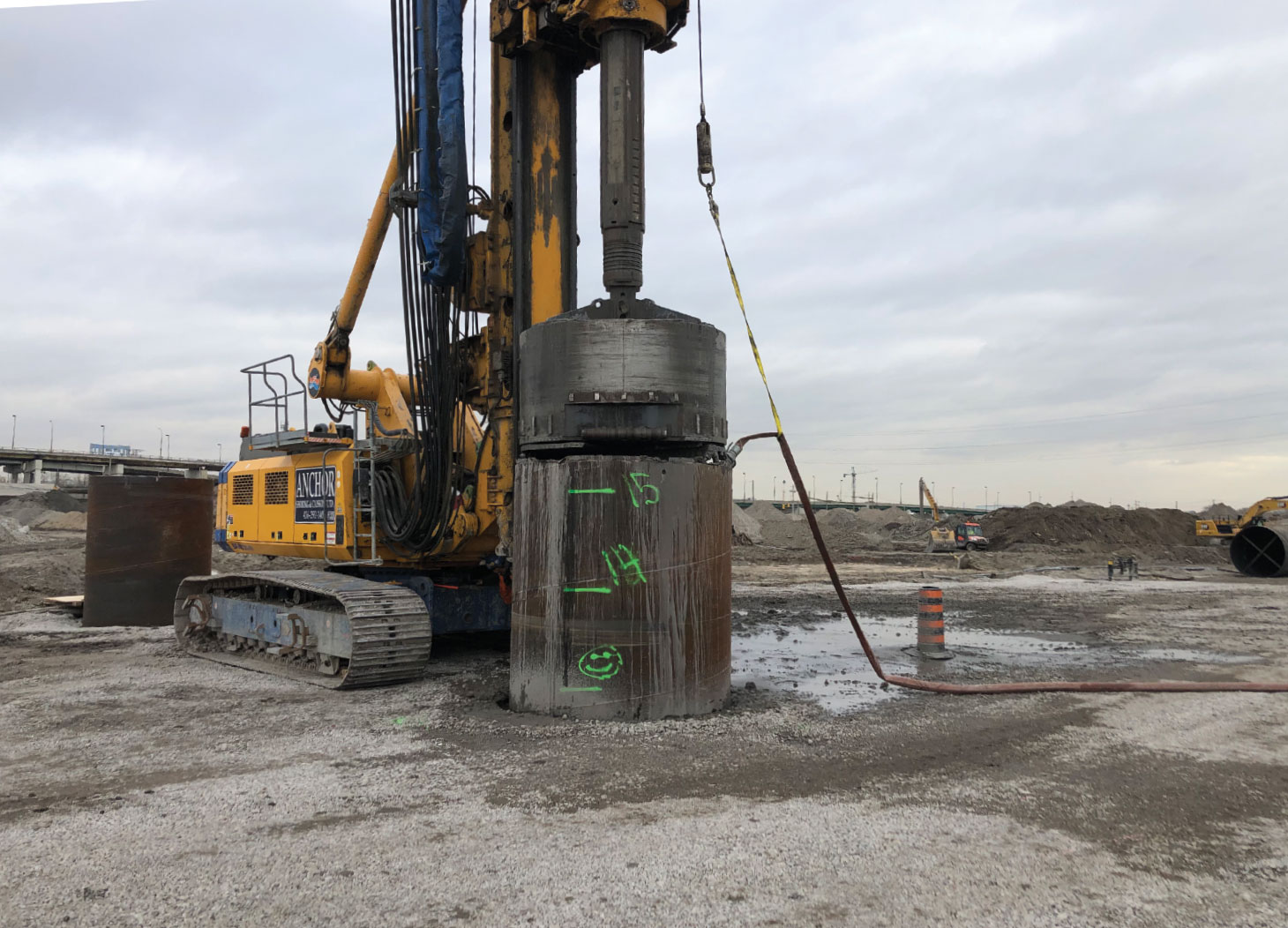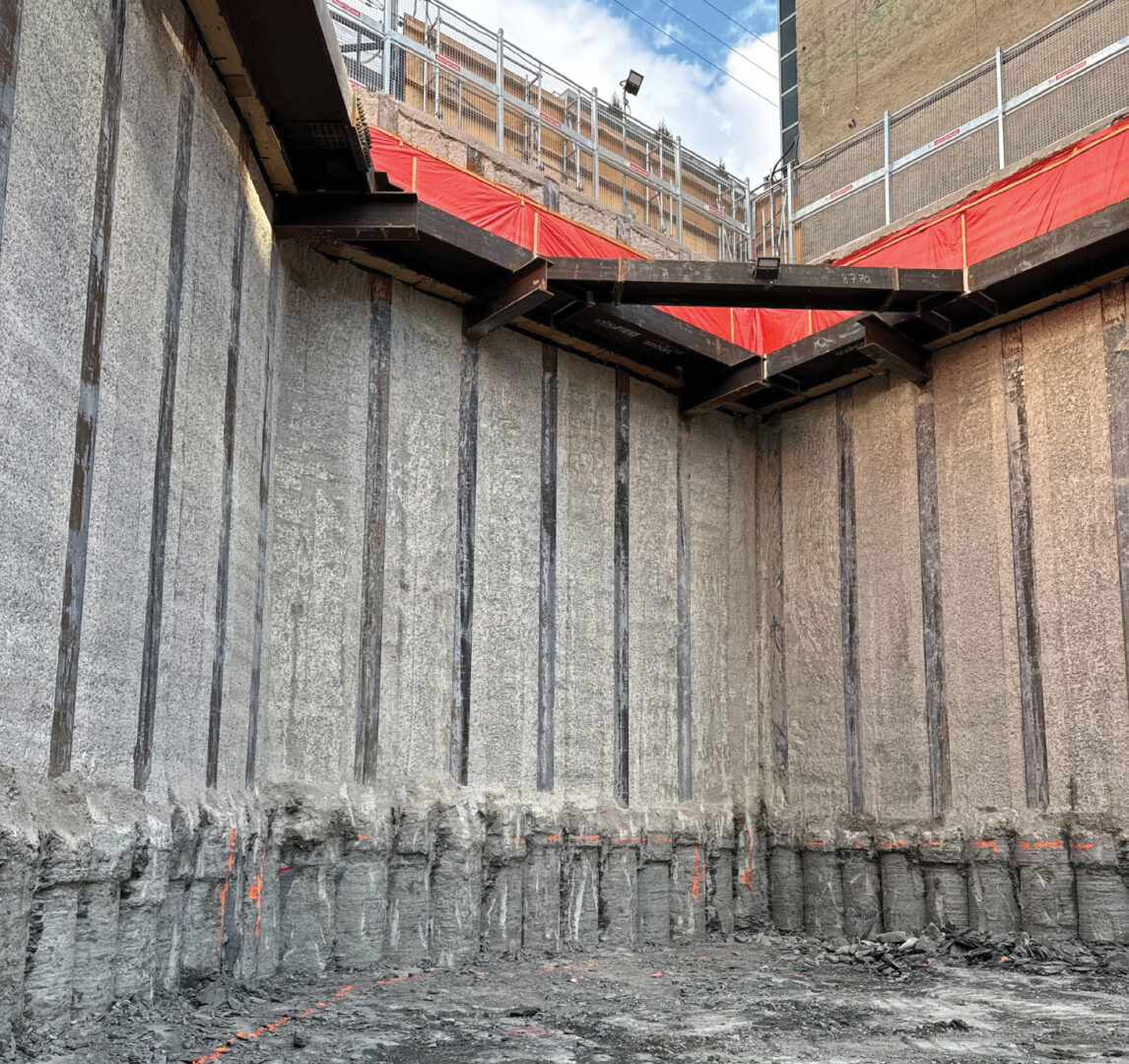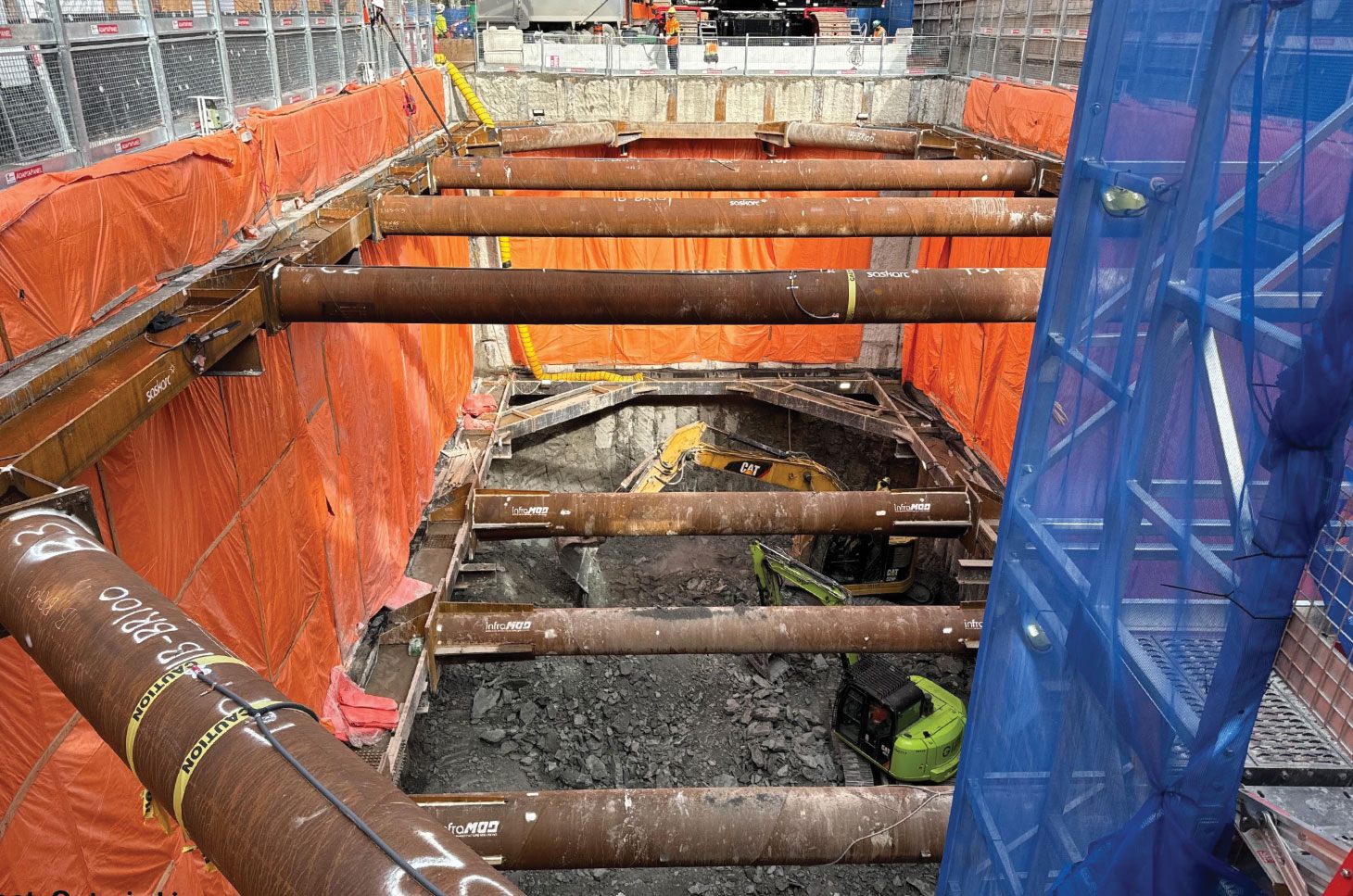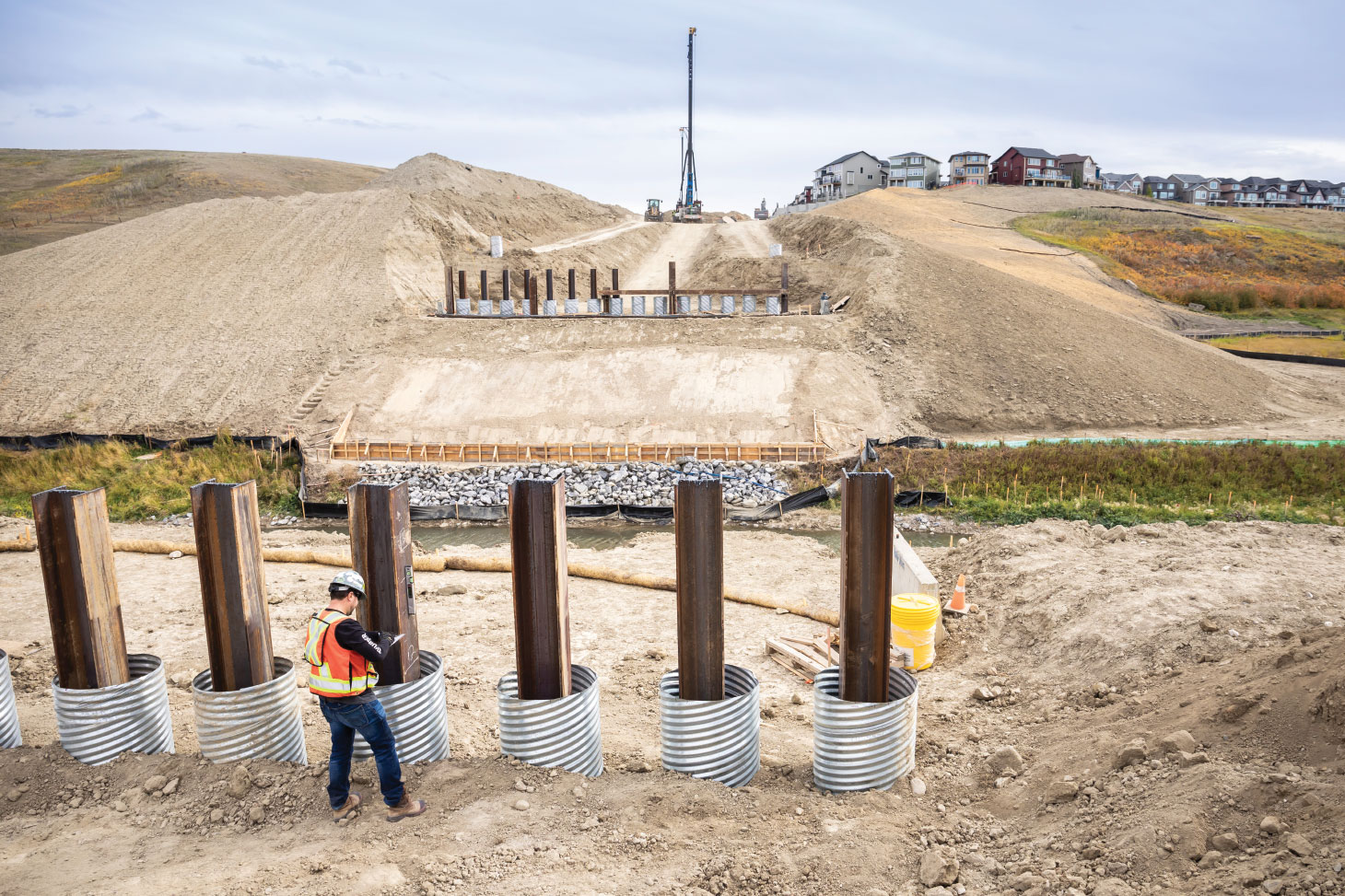
Those in the pile driving industry know that excavation is a critical part of deep foundation construction, often generating large volumes of displaced soil. The management of this soil depends on various factors, including its composition, contamination levels and project requirements.
Thurber Engineering Ltd., a Canadian consulting firm founded in 1957, provides geotechnical, environmental, hydrogeological, construction materials engineering and testing services. With 15 offices across the country and headquartered in Edmonton, they bring specialized knowledge of Canada’s diverse geotechnical and environmental conditions and regulatory regimes to the industry.
Piling Canada had the opportunity to sit down with David Kantor, a consulting environmental engineer and Ali Ahmad, a geotechnical engineer – both based out of the Oakville, Ont., office – to discuss the numerous topics around the handling of excavated soil, including disposal, reuse, environmental regulations and industry best practices.


When soil is excavated during a deep foundation project, what are the typical options for handling it?
David Kantor (DK): Typical management options for excavated soil include on-site reuse, off-site reuse and disposal to a landfill. Under Ontario Regulation 406/19, as amended (O.Reg. 406/19), soil that is removed from a site is defined as excess soil and must be managed in accordance with the regulation. However, soil that remains on a site is exempt from O.Reg. 406/19, so owners are encouraged to reuse as much soil on their site as possible.
What factors determine whether soil is disposed of, reused or relocated?
DK: Transportation and disposal costs – as well as site constraints – will drive soil management decisions. The management options for excavated soil, however, depend on the physical and chemical characteristics of the soil. If soil is not geotechnically suitable to be reused, it must be removed from the site. And, if chemical concentrations of contaminants in soil are above acceptance criteria for off-site reuse sites, the soil would have to be disposed of.
Are there industry best practices for minimizing the environmental impact of excavated soil?
DK: There are many best practices to minimizing the environmental impact of excavated soil. The progression, from least to most environmental impact, from a site owner’s perspective looks a bit like this:
- Does the soil need to be excavated, or can it be treated or stabilized in place?
- If excavated, can the soil be reused on-site for a beneficial purpose?
- If the soil must be removed from the site, it must be tested for its chemical properties to determine if the soil can be reused or disposed of.
When soil must be removed from a site, the environmental impact can be reduced by finding reuse or disposal sites that are close to the source site to minimize the impact of trucking the soil and by avoiding handling the soil (excavating, trucking, depositing) multiple times.

Before determining what to do with excavated soil, how is it tested and classified?
DK: Excavated soil is tested for physical, chemical and geotechnical properties to assess its suitability for reuse or disposal. Prior to construction activities, a subsurface investigation takes place, which typically involves the advancement of boreholes into the ground using a drill rig.
Soil samples are collected at regular depth intervals from the boreholes, and this soil is analyzed in a laboratory for its physical properties (e.g., grain size, moisture content, etc.) to determine the soil type and geotechnical characteristics. Samples are also analyzed for their chemical composition. They are also tested for chemical parameters that may potentially be present at the site, which are determined during a desktop study called a Phase 1 environmental site assessment or assessment of past uses.
What key characteristic factors (such as contamination, moisture content, composition) influence whether soil can be reused?
Ali Ahmad (AA): All of these factors influence the fate of excavated soil. The level of contamination in soil will determine if a reuse site can accept the soil. High moisture content can make soil unsuitable for backfill without drying or stabilization. The presence of expansive clay or organic material may limit reuse due to settlement concerns. If soils are too wet – for example, excavated by hydro-vacuum method – they may be considered as liquid soils and need to be managed differently than excess soil that passes what is called a slump test.
“Certain types of soils, such as sands and gravels, are more easily compacted and thus are more likely to be able to be reused for a beneficial purpose at a site while the presence of clay or organic material may limit reuse due to settlement concerns.”
Ali Ahmad, Thurber Engineering Ltd.
Certain types of soils, such as sands and gravels, are more easily compacted and thus are more likely to be reused for a beneficial purpose at a site, while the presence of clay or organic material may limit reuse due to settlement concerns.
Where is excavated soil typically transported for disposal? Are there designated landfill sites for different types of soil?
DK: If soil cannot be reused, it is typically disposed of at a landfill site. However, as of Jan. 1, 2027, soil that meets a certain environmental standard in Ontario will generally not be allowed to be brought to a landfill site and must be deposited at a reuse site. Most types of soil can be deposited at Ontario landfill sites. However, if soil is classified as hazardous under O.Reg. 347/90, it must be brought to a special landfill that accepts such soils.
How do disposal costs impact project budgets, and are there strategies to minimize these costs?
DK: Soil disposal costs are always a main consideration for construction projects. The strategies to minimize these costs would be considered best management practices. For example, finding ways to reuse soil on-site, finding reuse or disposal sites near the source site, finding reuse sites with low tipping fees that accept the chemical composition of soil from the source site, etc.
Are there regulations governing how soil must be transported and disposed of?
DK: The main regulation that governs the management of waste in Ontario is O.Reg. 347/90, as amended, and the regulation that relates more to the management of excess soil specifically is O.Reg. 406/19, as amended.

What are the environmental concerns related to soil disposal, and how is the industry addressing them?
DK: Landfills in Ontario have less and less space, and it is not sustainable to export our garbage outside our borders. Therefore, diverting clean soil from landfills to receiving sites that need fill material is one of the reasons the Ontario government came out with O.Reg. 406/19. Although this regulation was put into law in 2019, it is taking a long time for municipalities and contractors to be aware of the regulation, to understand its implications and details and to fully adopt it. This is demonstrated by the extension from Jan. 1, 2025 to Jan. 1, 2027 of the deadline for not being able to dispose of “clean” soil at a landfill.
In what types of construction projects can excavated soil be reused?
DK: Excavated soil can be reused in any construction project, depending on the soil’s physical and chemical characteristics and the anticipated purposes for the soil. For example, an excavated clay material would not be appropriate to be reused as a base for a road reconstruction, as road base required granular material such as sands and gravels.
“I believe the biggest challenge at the moment for construction projects that generate a large volume of excavated soil is to find a suitable reuse site near the source site.”
David Kantor, Thurber Engineering Ltd.
What processes are involved in stabilizing or treating soil for reuse?
AA: Common stabilization methods to improve soil strength properties include compaction, soil mixing with cement, lime or fly ash. Proper moisture conditioning ensures the soil meets project-specific compaction and stability requirements. For contaminated soil, chemical or biological treatment or methods such as thermal desorption or soil washing can reduce contaminant concentrations and render soil potentially reusable.
How does the engineering team determine whether soil can be placed back into the excavation site?
AA: The decision is based on soil testing, engineering properties and project requirements. A review of the soil’s geotechnical properties would first determine if the soil is suitable for its intended purpose for the project. If the soil is deemed geotechnically suitable, environmental engineers would review the soil’s chemical composition to ensure no adverse effect would be caused by reusing the soil on-site.
What are the biggest challenges construction teams face when dealing with large volumes of excavated soil?
DK: I believe the biggest challenge at the moment for construction projects that generate a large volume of excavated soil is to find a suitable reuse site near the source site. These projects are obliged to follow the requirements of O.Reg. 406/19. The MECP has even offered several exemptions from following certain aspects of the regulation (e.g., if excess soil from an infrastructure project is deposited at another infrastructure project).

However, it is proving to be very difficult to use these exemptions because the excavation at one infrastructure project – and the filling at another infrastructure project – rarely occur at the same time. In addition, delaying a project for the purpose of bringing excess soil to another infrastructure project is typically not acceptable from the perspective of the project schedule.
What sustainable practices are emerging in the industry to handle excavated soil more effectively?
DK: The construction industry is very much still getting used to the excess soil regime and developing innovative practices to handle soil more effectively, but I would say the most promising innovation is soil recycling, such as a facility that receives soil from construction projects and through a series of processing units, separates the soil into different soil types that can be used at other construction projects. Facilities exist in Western Canada that can process up to 150 tonnes of soil per hour and these companies are looking for ways to enter the Ontario market, but approvals for these soil recycling systems are proving to be difficult to obtain.